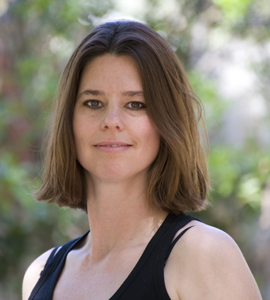How We Deal with Gravity
A novel by Ginger Scott
When her son Max was diagnosed
with autism, Avery Abbot’s life changed forever. Her husband left, and her own
dreams became a distant fantasy—always second to fighting never-ending battles
to make sure Max was given opportunity, love and respect. Finding someone to
fight along her side wasn’t even on her list, and she’d come to terms with the
fact that she could never be her own priority again.
But a familiar face walking into
her life in the form of 25-year-old Mason Street had Avery’s heart waging a war
within. Mason was a failure. When he left his hometown five years ago, he was
never coming back—it was only a matter of time before his records hit the
billboard charts. Women, booze and rock-n-roll—that was it for him. But it
seemed fate had a different plan in mind, and with a dropped record contract,
little money and nowhere to go, Mason turned to the only family that ever made
him feel home.
Avery loved Mason silently for
years—until he broke her heart…completely.
But time and life have a funny way of changing people, and sometimes second chances
are there for a reason. Could this one save them both?
Author Ginger Scott
What Inspired How We Deal With Gravity
There are warriors in this world—people who are a hell of a lot stronger than I am. And this book is about them.
I was a teenager the first time I heard the word autism. Rainman—that’s what I thought it was all about. Yes, a great movie, but really a fairly simplified portrayal of autism. I’m embarrassed that I once summed up a diagnosis as serious as autism based on a Dustin Hoffman movie. But I didn’t really know any better—and there are a lot of people like me out there.
Autism stuck with me, and when I was in my early 20s and working for a magazine, I decided I wanted to write a feature story on what it was really like to be a family affected by it. I made some calls and connected with Denise Resnik, an amazing woman who lives in Arizona. She helped found what started as a small resource center in Phoenix that was helping diagnosed families. She did it because her son had been diagnosed, and when she went through it, she didn’t know where to turn. The answers were all vague and hidden under research and medical jargon. And the more Denise unraveled for her family, the more she wanted to help those in the same circumstances, so they wouldn’t have to work so hard just to find answers.
I spent a lot of time with Denise and her family, and my perspective of all that autism is—and isn’t—changed. My small feature for the magazine turned into an eight-page in-depth look at autism and the Southwest Autism Research and Resource Center (SARRC). It traveled from reader to reader, one of those stories people ripped from the magazine glue and mailed to a friend. It turned into more phone calls to the center, and in some cases, donations to the cause. Something I wrote educated and incited action. It’s my favorite thing I’ve ever written, and it was an anchor for a lifelong passion for shedding light on autism.
What is autism? Here’s the clinical definition: Autism is a complex neurobiological disorder associated with impairments in socialization, verbal and nonverbal communication, restricted play and interests, and repetitive motor movements. The disorder affects each individual differently, and there is a wide range of functioning associated with the disorder.
But here’s what autism is as I see it: It’s a cage that traps the mind, and it traps every person’s mind a little differently. For some, it means they aren’t able to communicate how they feel, what they need or what they want. For others, they aren’t able to distinguish certain emotions—they don’t know how to show happiness or sadness and they don’t understand those cues from others. Some people affected by autism can’t speak, and for others, it’s mostly a social block, one that makes it more than challenging to make friends.
Since I wrote that first story, I have had family personally diagnosed and several friends whose families are affected by the autism spectrum. And Denise, the woman I met at the very beginning, went on to lead a charge, creating an organization that has since become a national leader in the fight to find autism therapies, factors and, with hope, one day a cure.
So, that’s a lot of intro material, I know…but I wanted to give you a little background on why this book is so important to me. I have interviewed dozens of families over the years in my volunteer work for SARRC. (I write the cover stories for their magazine.) I have cried with parents as they’ve shared their journeys with me. And there’s this one common thread that I’ve noticed in every interview I’ve had—the parent never puts themselves first. And I started to think about those parents I’ve met who are fighting this battle alone. And then…of course…the romance author in me started to think about their chance to find love.
Ideas like this tend to hit me while I’m running on the treadmill. I always do plotting and character development while I run. It’s my way of not paying attention to how much longer I have to make my legs move. A few months ago, I had the above stream of thoughts, and I actually forced myself to stop running early and ran to my locker to jot down everything I was thinking (I’m pretty sure I looked like a crazy person). The result was How We Deal With Gravity.
Gravity is a love story—first and foremost. But, it’s also so much more. It’s about falling in love through a second chance and finding the courage to take it. It’s also about putting yourself first, when every instinct in your body is to put yourself last. It’s about loving a soul mate and loving a child and finding a way to make those two coexist. And it’s about ignorance and acceptance.
The story is told from two points of view: Avery Abbot, a single mom of a child with autism, and Mason Street, the failed musician back in town for a fresh start. They have history—for Avery it’s a painful history, and for Mason their past is just part of his youth, a blip in a long line of blips. The story centers on how people change over time, and how those major moments in life can reshape who we are. For Avery, being a mother has meant being a fighter, and for Mason, being a failure has meant having to take a hard look at who he really is. As the two reconnect, those purposes start to shift, and a unique and powerful love starts to grow.
My debut, Waiting on the Sidelines, will probably always hold that special pedestal place in my heart. But this book is right next to it. How We Deal With Gravity is honest and real and beautiful and brutal all at once—at least, I hope that’s how it’s perceived. And I cannot wait to get it in everyone’s hands.
How We Deal With Gravity will be released in June. In the meantime, if you would like to learn more about autism, I invite you to visit SARRC online at http://www.autismcenter.org.
Seven Things About Mason Street of How We Deal With Gravity
So let’s face it, the best part about writing a new-adult romance is writing the super sexy guy who gets to live in your head. And Mason Street was awhole lot of fun to write! You’ll get to know him more in the future I’m sure, but for now, just a little taste.
1. Mason Street’s “look” was slightly inspired by country singer Sam HuntJGo on, Google him—he’s pretty dang hot.
2. Mason is a musician, a singer/songwriter with a love for the blues, classic R&B and Gibson Les Paul guitars.
3. His drink of choice will always be a beer.
4. His favorite shirt is the decade-old white T-shirt with the slogan from his favorite bar on the front. The cotton is thin and there’s a hole in the bottom, and it’s probably not going to survive too many more washes.
5. He played football in high school, but only because that’s what his friends did, and because he liked the attention he got from girls.
6. He’s never really slow-danced with a woman, but he’s never had to.
7. He’s loyal to those that matter, and he’s never really been in love…until now.
-About the Author-
Ginger Scott is a writer and journalist from Peoria, Arizona. Her newest novel, "Blindness," will be available in February 2014.
Her debut novel, "Waiting on the Sidelines," is a coming-of-age love story that explores the real heartbreak we all feel as we become adults throughout our high school years. The story follows two characters, Nolan (a Tomboy with a baseball player's name) and Reed (the quarterback she wishes would notice her) as they struggle with peer-pressure, underage drinking, bullying and finding a balance between what your heart wants and what society says you should want -- even if you aren't ready. You can read it, and the sequel, "Going Long," now on Amazon, Barnes & Noble and other e-book outlets.
Scott has been writing and editing for newspapers, magazines and blogs for more than 15 years. She has told the stories of Olympians, politicians, actors, scientists, cowboys, criminals and towns. For more on her and her work, visit her website at http://www.littlemisswrite.com.
Her debut novel, "Waiting on the Sidelines," is a coming-of-age love story that explores the real heartbreak we all feel as we become adults throughout our high school years. The story follows two characters, Nolan (a Tomboy with a baseball player's name) and Reed (the quarterback she wishes would notice her) as they struggle with peer-pressure, underage drinking, bullying and finding a balance between what your heart wants and what society says you should want -- even if you aren't ready. You can read it, and the sequel, "Going Long," now on Amazon, Barnes & Noble and other e-book outlets.
Scott has been writing and editing for newspapers, magazines and blogs for more than 15 years. She has told the stories of Olympians, politicians, actors, scientists, cowboys, criminals and towns. For more on her and her work, visit her website at http://www.littlemisswrite.com.








Love love love this cover! I also love the title. Thanks for sharing this one.
ReplyDelete